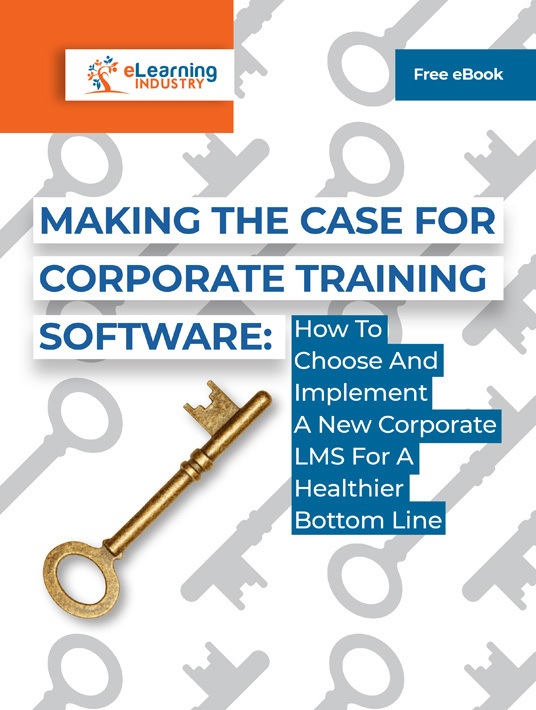Essential Resources For Your Regulatory Compliance Corporate Training Program
Corporate training programs can have a macro or micro-target. Macro is generally external. Requirements are listed and enforced by a governing industrial body. They might even be written into law. These include thing like the Hippocratic Oath for doctors, the legal bar for lawyers or road safety authorities for drivers. Micro-compliance is more intimate and may cover issues like -sexual- harassment, financial ethics, or equipment maintenance. They vary between organizations and are largely enforced in-house. In both cases, what special tools and features does your LMS require to successfully effect compliance training? Here are 5 essential resources to add to your regulatory compliance corporate training program with the help of a corporate LMS.

1. Legal Glossaries
The average compliance manual reads like T&Cs, but it's even more obtuse. And while at a civilian level we can tick ‘I agree’ without actually reading them, it’s impossible at corporate levels. There’s often a compliance officer to assess and verify how well you’re maintaining regulation. There may even be an authorized certificate which is only issued after you pass compliance tests. Then, even with that knowledge, an external ‘examiner’ has to visit your premises. They confirm all the rules and measures are in place before any license renewal.
In order to follow these regulations, you first have to understand them. Think about your work contract. On the first page or two, there are paragraphs explaining key terms. Usually, they cover the legal definition of ‘the company’, ‘the employee’, ‘the business’ etc. Your corporate training program should have this type of document available, both inside the training course and as a standalone. Make it plain text, easily legible, highly searchable, available offline and accessible via mobile. The glossary should have the proper jargon, then below it, a layman's explanation, possibly with illustrations. This increases recall and ensures comprehension.
2. Case Studies
Context is crucial in any kind of training but it’s mandatory in compliance matters. It helps bring the theory closer home. It’s also the only way your team can truly remain compliant. Without context, your staff won’t necessarily know that they’re violating the law. Say, for example, your policy says staff must never accept tips above $100. Anything above that constitutes 'financial influence' or a bribe. Remember, the law is all about loopholes, and those little gaps can cost you thousands, or worse, prosecution. For example, you meet a client at a supermarket. You’re chatting as your cart is tallied. You don’t have your loyalty card with you, so your client offers to pay your bill. They say they need the loyalty points because they’re ‘saving them up’ to redeem a microwave. You laugh and agree. Except your bill amounts to $100.24. Ordinarily, this is no big deal. But legally during an audit, this could be considered a bribe. It could result in you paying a $5,000 fine, all because of an excess of 24 cents.
3. Compliance Techniques
In the example above, your employee may be clearly aware of the potential risk. But other matters may be a bit murky in terms of compliance. Maybe instead of paying for your shopping the customer clears their own cart and waits for you. Then, as you walk to your cars they give you a bottle of wine or a book. How do you politely refuse without offending them? Your LMS can provide branching scenarios, simulations and practice conversations to get trainees out of these tight corners. It doesn’t have to be an entire course. It could just be a minor tutorial on ‘how to say no graciously’ or ‘defining corporate boundaries’. You have to give them stock phrases they can use to turn down peer pressure, so they can safely evade non-compliance without coming across as blunt or rude.
4. Quick-Reference Infographics
Sometimes your employees just need a quick ‘cheat sheet’ that covers certain aspects of the corporate training program. Such as how to properly handle items or store them in safe temperatures/conditions. An infographic gives them all the information they need in a microlearning format. They can refresh their memory and avoid the most common mistakes without having to sit through an hour-long presentation or course. Make sure to keep the graphics to 5 items/sections or less so that employees don’t get overwhelmed. Also, only use images that tie into the subject matter instead of trying to populate it with eye-catching visuals that contribute to cognitive overload.
5. Demo Videos
Showing instead of telling is the best way to improve knowledge retention in your compliance corporate training program. Such as right/wrong demo videos that teach employees how to follow the rules and prevent slip-ups. For example, a video features an animated character who doesn’t put up the signs while cleaning a spill. Or operates a piece of heavy equipment without wearing the proper gear. They notice certain behaviors that they can mimic in the workplace. As well as those that may lead to costly violations or injuries.
Your LMS has a broader scope than full-fledged courses. And because you have full reign over it you can populate it however you like. In the case of compliance regulation, it’s possible to customize it to your needs. You can add resources that aren’t available in standard training courses. These include a portable glossary to demystify legal jargon. Case studies are always good because context pushes contestants past empty theory. Finally, give them practical experience in refuting to benign noncompliance temptations. It makes their lives much easier and will save you millions in fines while avoiding awkward situations.
Getting new hires into the flow of your work-place is an essential corporate undertaking. How can you be sure you get it right? Download our eBook Making The Case For Corporate Training Software: How To Choose And Implement A New Corporate LMS For A Healthier Bottom Line and discover all you need to know so you can choose and implement a new corporate LMS.

